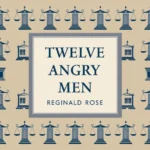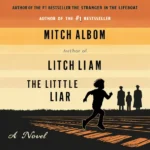Introduction
Barbara Kingsolver’s The Poisonwood Bible PDF is a richly woven tale that examines cultural clashes, familial bonds, and the consequences of imposing beliefs on others. Published in 1998, this novel has left a significant mark on contemporary literature, prompting readers to reflect deeply on cultural and spiritual complexities.
| Name of PDF | The Poisonwood Bible |
|---|---|
| No Pages | 546 |
| Author | Barbara Kingsolver |
| Originally Published | 1998 |
| Language | English |
| Genres Characters | Novel, Historical Fiction, Domestic Fiction, Religious Fiction Adah Price, Orleanna Price, Nathan Price, Rachel Price, Leah Price |
| Size | 1.13 MB |
| Chek, latest edition |
Table of Contents
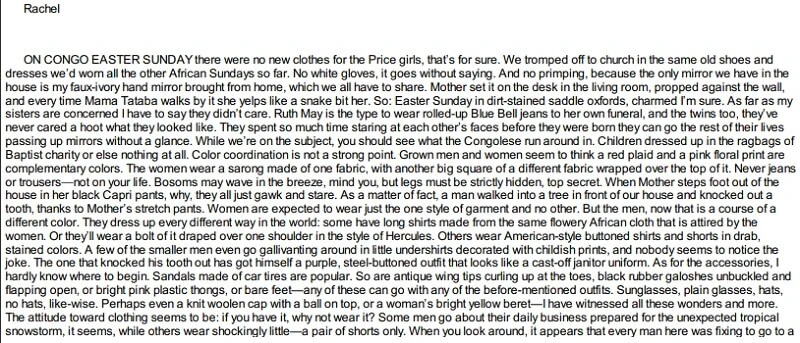
About the Author: Barbara Kingsolver
Barbara Kingsolver, a celebrated author and environmental activist, brings her deep appreciation for human and ecological connections into her writing. Born in 1955, Kingsolver’s upbringing in rural Kentucky and experiences living abroad have profoundly influenced her work. Her writing style is characterized by vivid imagery, lyrical prose, and a compelling ability to weave social and environmental themes into her narratives.
Plot Summary
The Poisonwood Bible follows the Price family, who travel from Georgia to the Congo in 1959 under the patriarch, Nathan Price, a fiery and determined Baptist missionary. The story unfolds through the eyes of Orleanna Price and her four daughters: Rachel, Leah, Adah, and Ruth May. As the family grapples with cultural misunderstandings and the harsh realities of the Congo, they are forever altered by the events that unfold. Key moments, such as the tragic loss of Ruth May, reshape the family’s trajectory and force each character to seek meaning and redemption in different ways.
Setting of the Novel
The Congo, with its lush jungles and stark realities, serves as more than a backdrop; it becomes a character in itself. The novel is set during a time of political upheaval, capturing the Congo’s struggle for independence from Belgian rule. This setting amplifies the themes of cultural and political conflict and underlines the impact of colonialism on both a personal and societal level.
Main Themes
Cultural Clash and Colonialism
One of the novel’s most compelling themes is the clash between Western and African cultures. Nathan Price’s attempt to impose Western religious beliefs on the Congolese community highlights the destructive nature of cultural imperialism. The novel challenges readers to consider the consequences of imposing one’s values onto others without understanding their way of life.
Religion and Faith
Religion plays a central role, particularly through Nathan Price’s zealous and unyielding faith. His inability to adapt or respect the Congolese people’s spirituality leads to devastating consequences. In contrast, other characters, such as Orleanna and Leah, experience profound transformations in their beliefs, illustrating the evolving nature of faith.
Family Dynamics
The Price family’s relationships are complex and evolve throughout the novel. Orleanna, once a submissive wife, grows into a fiercely protective mother. The daughters each navigate their own paths, shaped by their father’s oppressive presence and the challenges of living in the Congo. This theme explores how trauma and guilt can either fracture a family or bring it together.
Guilt and Redemption
Guilt haunts Orleanna and her daughters, particularly after Ruth May’s death. Each character seeks redemption in different ways. Orleanna, for instance, dedicates her life to activism, while Leah integrates into Congolese society and advocates for justice. The novel asks readers to consider how guilt can shape one’s choices and the possibility of forgiveness.
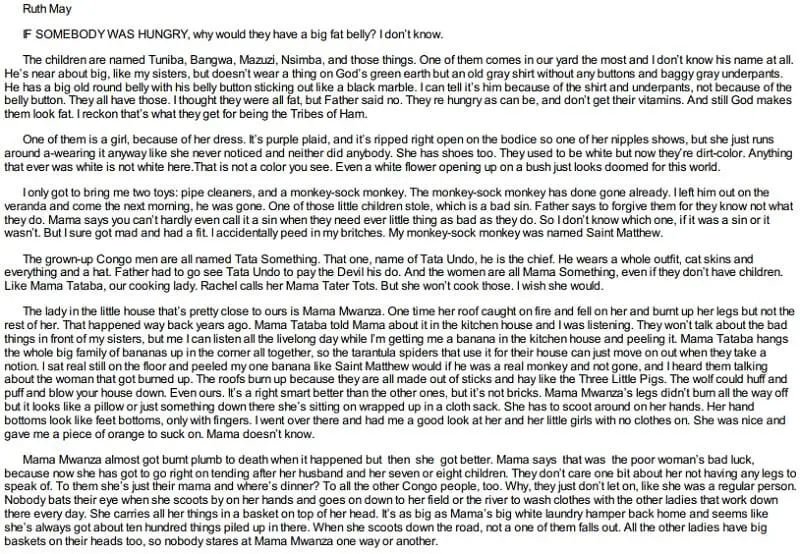
Character Analysis
Nathan Price
Nathan is a rigid, domineering preacher whose mission to convert the Congolese people drives much of the conflict. His unyielding nature and refusal to adapt underscore the dangers of blind faith and cultural insensitivity.
Orleanna Price
Orleanna transforms from a passive, obedient wife to a grieving mother seeking redemption. Her journey is one of awakening and empowerment, as she ultimately recognizes the impact of her choices on her daughters and takes steps to make amends.
The Four Daughters
Rachel
The eldest daughter, Rachel, is self-absorbed and resistant to change. Her superficial nature represents the Western world’s ignorance and unwillingness to engage meaningfully with other cultures.
Leah
Leah’s character undergoes significant development. Initially devoted to her father, she grows to question his authority and becomes deeply connected to the Congolese people. Her journey represents the struggle between inherited beliefs and personal growth.
Adah
Adah, who is physically disabled, offers a unique and insightful perspective. Her sharp intellect and reflective nature reveal the novel’s deeper themes of duality and resilience.
Ruth May
Ruth May’s innocence and untimely death are pivotal in the story. Her fate serves as a catalyst for change within the Price family and symbolizes the cost of cultural arrogance.
Narrative Style and Structure
Kingsolver employs multiple narrators, allowing readers to see the events through the eyes of Orleanna and each of her daughters. This technique enriches the story by offering diverse perspectives and highlighting the complexity of the Price family’s experiences.
Symbolism in “The Poisonwood Bible book”
Symbols, such as the Congo itself and Nathan’s failed garden, add depth to the narrative. The garden, for example, represents Nathan’s inability to understand and adapt to his environment. Such symbols underscore the novel’s themes of cultural disconnect and the consequences of hubris.
Cultural and Historical Context
Set against the backdrop of the Congo’s fight for independence, the novel explores the intersection of personal and political struggles. Kingsolver seamlessly weaves historical events, such as the assassination of Patrice Lumumba, into the narrative, making the story both educational and emotionally powerful.
Literary Devices Used
Kingsolver’s use of literary devices, including vivid imagery and foreshadowing, enhances the novel’s impact. Her descriptive language brings the Congo to life, while subtle hints prepare readers for key turning points, adding layers of meaning to the story.
Critical Reception and Legacy
The Poisonwood Bible has been widely praised for its intricate storytelling and exploration of cultural and moral complexities. Critics and readers alike have celebrated Kingsolver’s ability to tackle difficult themes with grace and nuance. The novel remains a staple in discussions about post-colonial literature and continues to inspire new generations of readers.
Adaptations and Influence
Although there hasn’t been a major film adaptation, the novel has influenced discussions in academic and literary circles. Its themes have resonated beyond literature, impacting conversations about cultural understanding and ethical responsibility.
Why “The Poisonwood Bible” Still Matters Today
In today’s world, the themes of cultural sensitivity and the dangers of imposing one’s beliefs are more relevant than ever. The novel encourages readers to engage with different cultures thoughtfully and to reflect on their own beliefs and biases.
Discussion Points for Book Clubs
- What does the Congo symbolize in the novel?
- How do the daughters’ experiences differ, and why?
- What role does guilt play in the characters’ development?
- How does Kingsolver use historical events to shape the narrative?
- What lessons can be learned about cultural humility?
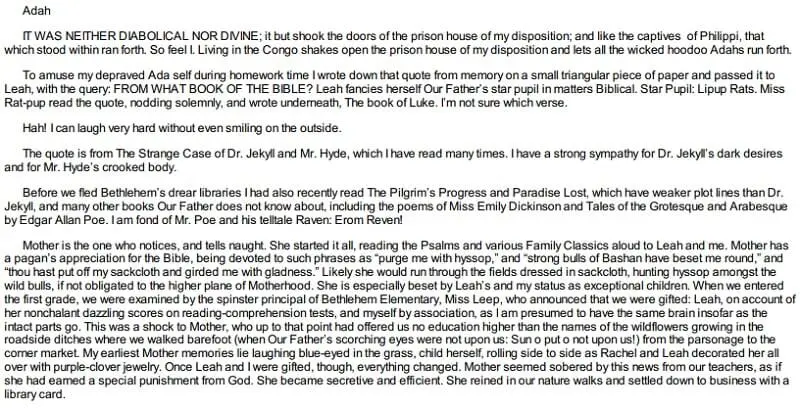
The Poisonwood Bible Summary
The Poisonwood Bible is a masterful exploration of faith, family, and cultural understanding. Barbara Kingsolver’s novel invites readers to reflect on their own beliefs and the impact of their actions on others. It’s a story of transformation, loss, and ultimately, hope.
FAQs about The Poisonwood Bible PDF
What inspired Barbara Kingsolver to write “The Poisonwood Bible”?
Kingsolver was inspired by her own experiences living in the Congo and her desire to explore the cultural and historical complexities of the region.
How does the setting influence the story?
The Congo’s lush and challenging environment shapes the characters’ experiences and underscores the themes of cultural conflict and adaptation.
Why is Nathan Price such a pivotal character?
Nathan embodies the dangers of cultural arrogance and religious zealotry, serving as a catalyst for the novel’s central conflicts.
What is the importance of the daughters’ perspectives?
The multiple narrators provide a well-rounded view of the Price family’s journey and highlight how different people respond to trauma and change.
How has “The Poisonwood Bible” influenced readers and critics?
The novel has sparked conversations about post-colonialism, cultural humility, and the power of storytelling, earning it a lasting place in modern literature.
Why is it called Poisonwood Bible?
The novel got its title from Nathan Price’s error in his sermon: “Tata Jesus is bangala,” a word that could mean precious, but pronounced the way he said it meant “poisonwood.
What is the irony of The Poisonwood Bible?
The two programs seem to have a fundamental incompatibility.
What is the overall theme of Poisonwood Bible?
Tensions between love and hate, destruction and redemption, nation and nation, man and woman, and nature and beast.
What is the plot of The Poisonwood Bible?
Follows the Price family as they navigate the political and social turmoil of 1960s Congo.
The Poisonwood Bible setting
primarily the Belgian Congo, but also includes other locations in the United States and Africa
The Poisonwood Bible age Rating
22 years and up
The Poisonwood Bible publisher
Harper



